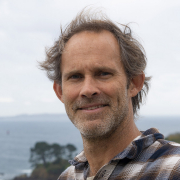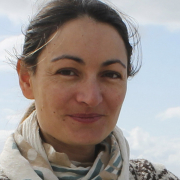Animators : Valérie Stiger (UBO) & Sylvain Petek (IRD).
Chemical ecology is a multidisciplinary field of research, involving a diversity of scientific and technical approaches. Chemical ecology consists of the study of interactions between organisms, and with their environment, mediated by molecules in all their diversity and complexity.
In temperate, tropical and polar environments, marine organisms present physiological adaptations to biotic and abiotic constraints, by producing original primary and/or secondary metabolites, or by selecting a microbiota with a specific surface area and producing defence metabolites; these adaptations thus play a very important role in the community structuring.
The chemical ecology research axis studies the interactions between species, but also the influence of environmental variations on these interactions and on the organisms inhabiting these ecosystems. In addition, following the isolation of defence molecules, this RA also makes possible to consider biotechnological applications of metabolites (link with RA6). Indeed, the communication or protection molecules isolated in this RA5 can be proposed as marine active ingredients and then can be used in various industrial sectors.
This RA5 is structured in 4 sub-axes allowing to cover all the team’s themes related to chemical ecology. Different models are studied: microalgae, macroalgae, sponges, alcyonaria and their associated microflora.
RA5.1 “Chemical adaptation to abiotic factors: photoprotection, osmoregulation, thermoregulation”.
RA5.2 “Chemical adaptation to biotic factors: grazing and allelopathy”
RA5.3 “Quorum sensing”
RA5.4 “Adhesion mechanisms – activation, inhibition”
 https://www-iuem.univ-brest.fr/lemar/wp-content/uploads/2018/06/fabioux-caroline-web2.jpg
1080
1920
sherve@univ-brest.fr
https://www-iuem.univ-brest.fr/lemar/wp-content/uploads/2018/10/logo-lemar-big.png
sherve@univ-brest.fr2018-06-18 17:25:222021-01-04 13:42:22Caroline FABIOUX
https://www-iuem.univ-brest.fr/lemar/wp-content/uploads/2018/06/fabioux-caroline-web2.jpg
1080
1920
sherve@univ-brest.fr
https://www-iuem.univ-brest.fr/lemar/wp-content/uploads/2018/10/logo-lemar-big.png
sherve@univ-brest.fr2018-06-18 17:25:222021-01-04 13:42:22Caroline FABIOUX































































































